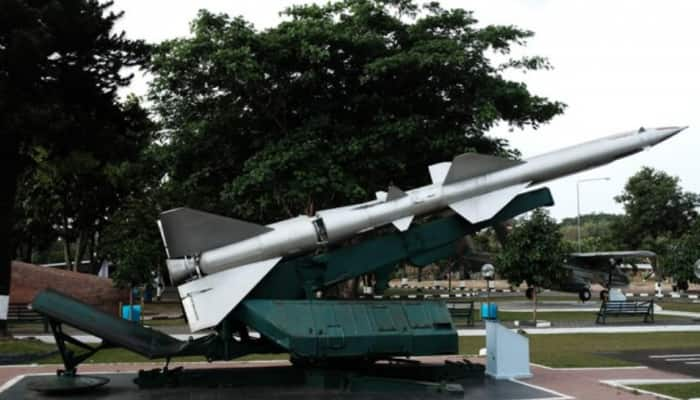Cruise vs Ballistic vs Hypersonic Missiles: Which One Is More Lethal? Check Range, Speed And Accuracy
Cruise, ballistic, and hypersonic missiles differ in speed, flight path, and interception difficulty. Cruise missiles fly at low altitudes within the Earth's atmosphere at subsonic or supersonic speeds. Ballistic missiles follow a high-arching trajectory, leaving and re-entering the atmosphere at hypersonic speeds. Hypersonic missiles travel faster than Mach 5, maneuver mid-flight, and are nearly impossible to intercept. While ICBMs have long ranges, hypersonic missiles offer speed and unpredictability, though they are costly to develop.
Cruise, Ballistic, and Hypersonic Missiles
)
Missiles play a crucial role in modern warfare, with countries constantly developing advanced technology to gain an edge. The three main types—cruise, ballistic, and hypersonic—differ in speed, flight trajectory, and strike capability, making each suited for specific military objectives. Let's delve deeply into what makes these missiles distinct from each other and their unique capabilities.
Cruise Missiles Speed

A cruise missile is a guided weapon that flies horizontally within the Earth’s atmosphere. It typically travels at subsonic speeds of Mach 0.8-0.9, though some versions can reach Mach 2-3. According to The Economic Times, these missiles rely on GPS, radar, or terrain contour matching (TERCOM) for guidance. They follow a low-altitude flight path, making them difficult to detect by radar. However, The Hindu reported that their slower speeds make them vulnerable to interception by advanced air defense systems.
Ballistic Missiles Range

Ballistic missiles, unlike cruise missiles, follow a high-arching trajectory. They are launched into space and then descend toward their target using gravity. The Indian Express explained that these missiles leave the Earth’s atmosphere during their mid-course phase before re-entering at hypersonic speeds ranging from Mach 10 to 20. Due to their long range, intercontinental ballistic missiles (ICBMs) can travel over 5,500 km. However, their high-altitude trajectory makes them easily detectable by radar, as reported by Hindustan Times. Additionally, they require a longer preparation time before launch.
Ballistic Missile Examples

India’s Agni missiles, the U.S. Minuteman III, and China’s Dongfeng-41 are some of the most well-known ballistic missiles, according to NDTV. These weapons provide strategic deterrence and are often equipped with nuclear warheads.
Hypersonic Missiles Speed, Range

Hypersonic missiles are the fastest among the three, traveling at speeds above Mach 5 and reaching up to Mach 25. BBC reported that these missiles use either boost-glide systems or air-breathing cruise engines. Unlike ballistic missiles, they do not follow a fixed trajectory and can maneuver mid-flight, making them highly unpredictable. This ability makes them nearly impossible to intercept, even with the most advanced defense systems.
Countries Who Own Hypersonic Missiles

Their speed and agility make hypersonic missiles a game-changer in modern warfare. However, according to The Print, the high cost and technological complexity involved in their development remain a challenge. Despite this, nations like Russia, the U.S., and China are heavily investing in them. Russia’s Avangard, the U.S. HAWC (Hypersonic Air-breathing Weapon Concept), and China’s DF-Z are some of the most notable examples, reported Al Jazeera.
Cruise vs Ballistic vs Hypersonic: Accuracy

Cruise missiles use GPS, radar, or TERCOM for navigation, ensuring precision. Ballistic missiles are guided mainly in the boost and mid-course phases, with some having terminal-phase guidance for precision strikes. While, Hypersonic missiles use real-time targeting and AI, making them highly precise while also being difficult to intercept.
India's Hypersonic Missile

India conducted a successful test of its first long-range hypersonic missile on November 16, 2024. The test took place at Dr. APJ Abdul Kalam Island in Odisha. Developed by the Defence Research and Development Organisation (DRDO), the missile is capable of delivering payloads over a range of 1,500 kilometers.
India joins a select group of nations, including the United States, Russia, and China, that have developed hypersonic missile technology. The successful test marks a significant step in strengthening the country’s defense capabilities.
Trending Photos









